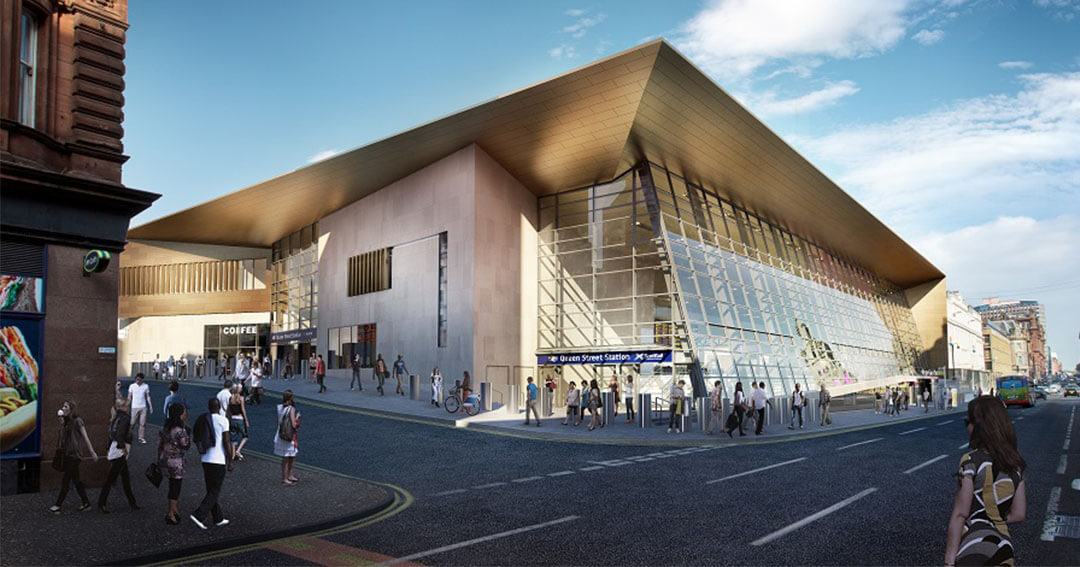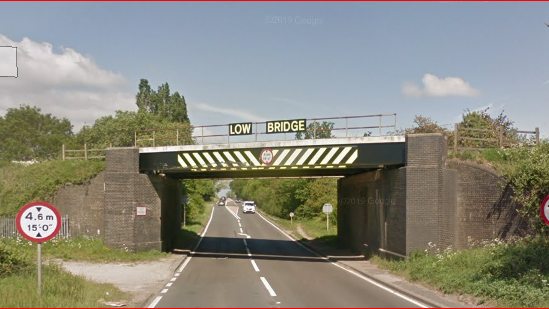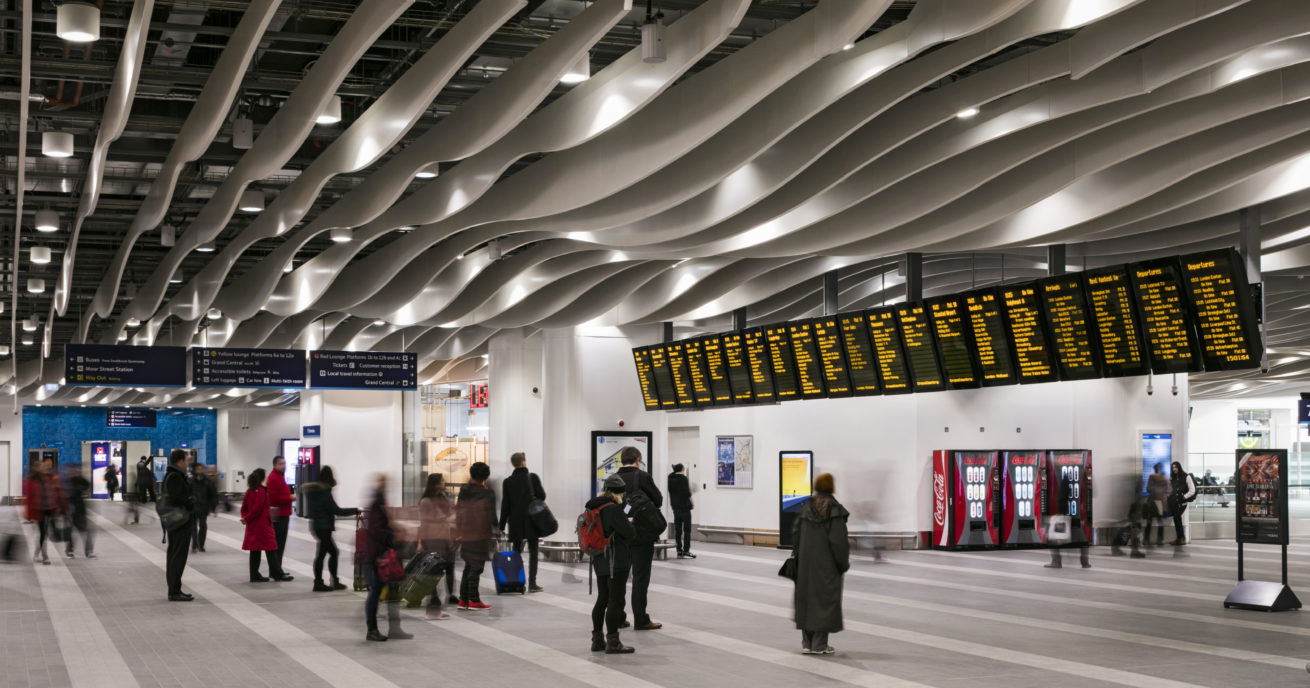Glasgow Queen Street station – the site one of our biggest improvement projects – is 183 years old this month.
We’ve completed a huge upgrade of the Victorian station in October 2021. It’s given you a contemporary and fully accessible building, a bigger concourse, new facilities and longer platforms for longer trains.
The £120m redevelopment is part of the Edinburgh Glasgow Improvement Programme (EGIP) – a Scottish Government investment in the railway infrastructure across central Scotland.
Here are seven things you didn’t know about Scotland’s third-busiest railway station:
1 – Before the pandemic, the number of people using Glasgow Queen Street was set to increase by 40% to reach 28 million by 2030. That’s why we’re working to create a spacious and accessible transport hub for when we return to normal times. It’s been carefully designed to be a positive and prominent addition to Glasgow’s historic George square.
2 – We removed more than 14,000 tons of material when we demolished redundant 1970s buildings in front of the station to make way for the huge upgrades – and recycled 94% of it. The material was the equivalent of 700 skips! We completed this site clearance in October 2018 to pave the way for a new station frontage, concourse, entrances and new, longer platforms.
Watch this video to see how we did it:
3 – We worked with contractors Balfour Beatty and Dem-Master to recycle 100% of the brick, timber and concrete removed from the site for re-use elsewhere in the construction industry, including on housing developments, road building projects and the bio-mass sector. Some of it, in the form of brick and concrete, which had been crushed into small stone, even returned to Queen Street for re-use on-site as part of the base layer for the new station.
4 – The station’s distinctive, category A listed roof didn’t complete until more than three decades after Queen Street opened. The station opened in 1842 but the glass roof wasn’t finished until 1878.
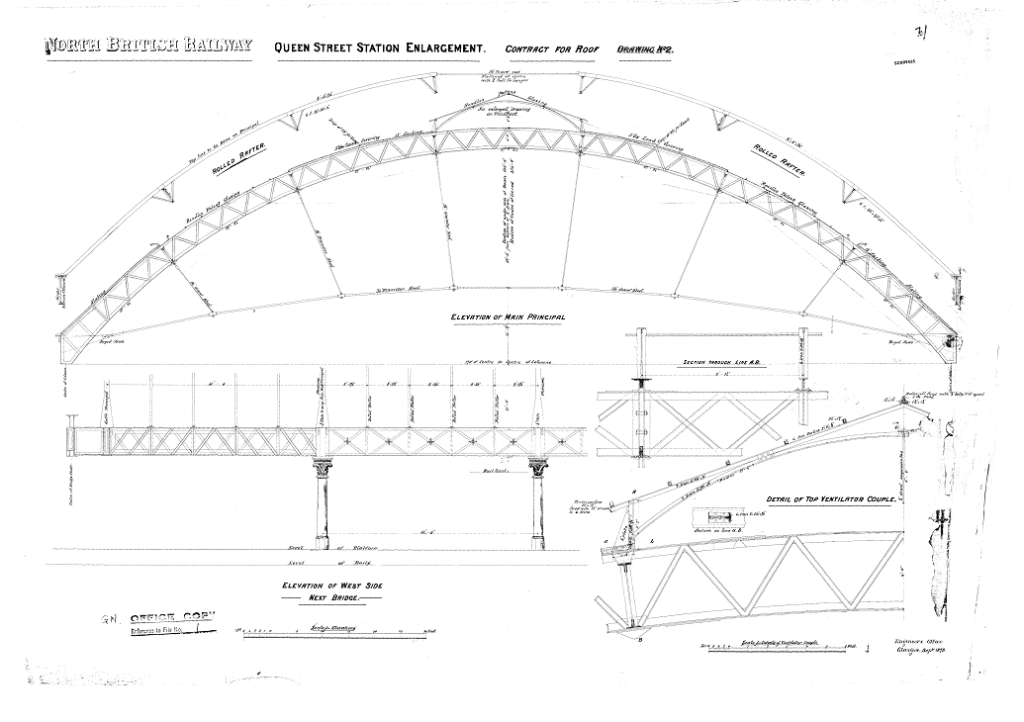
5 – It didn’t take long for the station to look tired after it opened. A 1930 article in Railway Magazine said Queen Street “had become the scene of vastly increased traffic, and, in the course of the years, any ‘pristine newness’ it presumably possessed in 1842 had worn off”.
The station was last re-developed between 1969 and 1973 and it involved the demolition of station buildings dating back to the mid-19th century. The current redevelopment is its first major upgrade for almost 50 years.
Gallery: Glasgow Queen Street’s biggest upgrade in almost 50 years
6 – Queen Street quickly needed more space. Railway Magazine said in 1930 that “powers were obtained” in 1877 for improvements, including an expansion of the station by opening some of the tunnel and widening the station to approximately the dimensions of the 1930s.
7 – The striking new glass façade on the West George Street side of the station is made up of 310 glass panes installed across a 21-metre-high structure. It covers 734m2 and weighs 33,030kg.
Julie Ferrie, project manager for Glasgow Queen Street station redevelopment, said in 2019: “Glass is a material with an enduring association with Glasgow Queen Street, given the A-Listed, Victorian barrel roof and gables.
“Visitors to the station will appreciate that the Victorian roof has been thoughtfully incorporated into the new structure and that it also remains fully exposed from the station platforms. We’re confident the new glass façade will enjoy the same enduring appeal.”
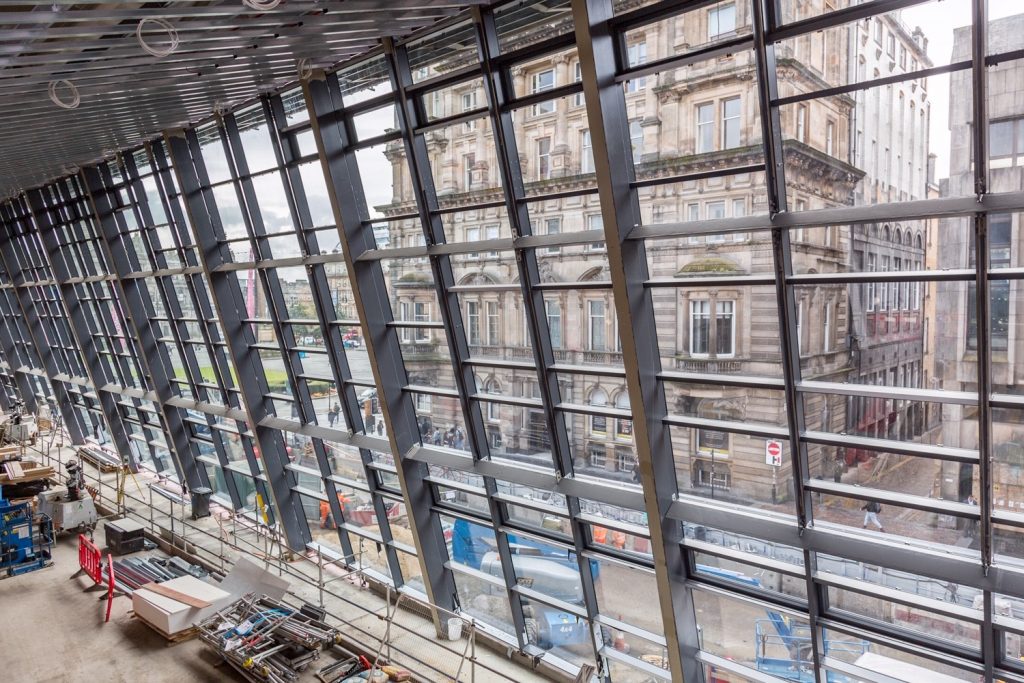
Read more:
Stations Day: 10 times we delivered better stations for passengers
From the archive: Glasgow Queen Street
People and the railway: 75 years of Brief Encounter
People and the railway: The Railway Heritage Trust
